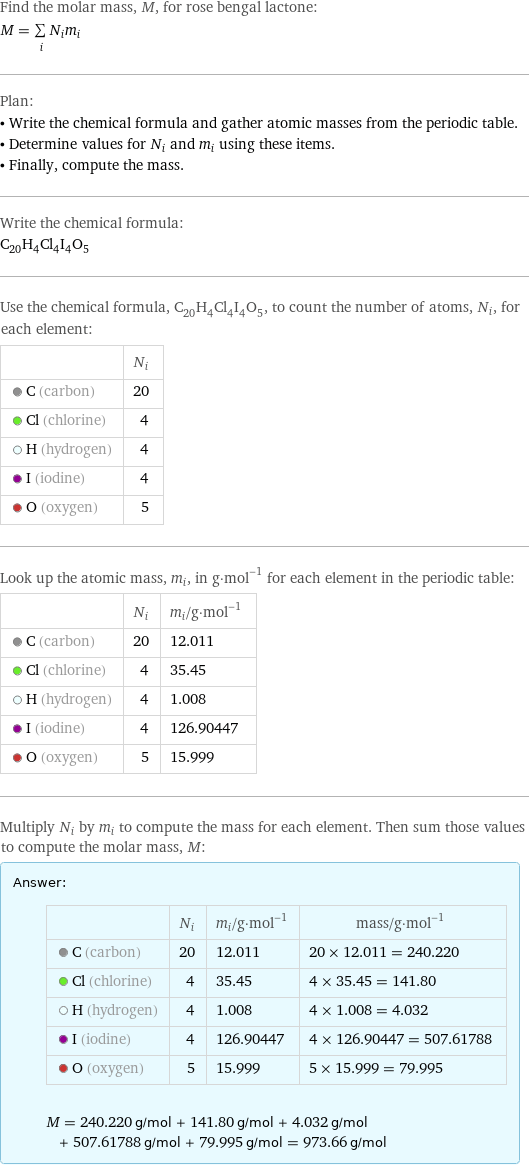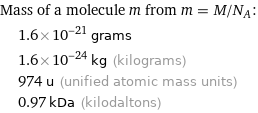Input interpretation

rose bengal lactone | molar mass
Result

Find the molar mass, M, for rose bengal lactone: M = sum _iN_im_i Plan: • Write the chemical formula and gather atomic masses from the periodic table. • Determine values for N_i and m_i using these items. • Finally, compute the mass. Write the chemical formula: C_20H_4Cl_4I_4O_5 Use the chemical formula, C_20H_4Cl_4I_4O_5, to count the number of atoms, N_i, for each element: | N_i C (carbon) | 20 Cl (chlorine) | 4 H (hydrogen) | 4 I (iodine) | 4 O (oxygen) | 5 Look up the atomic mass, m_i, in g·mol^(-1) for each element in the periodic table: | N_i | m_i/g·mol^(-1) C (carbon) | 20 | 12.011 Cl (chlorine) | 4 | 35.45 H (hydrogen) | 4 | 1.008 I (iodine) | 4 | 126.90447 O (oxygen) | 5 | 15.999 Multiply N_i by m_i to compute the mass for each element. Then sum those values to compute the molar mass, M: Answer: | | | N_i | m_i/g·mol^(-1) | mass/g·mol^(-1) C (carbon) | 20 | 12.011 | 20 × 12.011 = 240.220 Cl (chlorine) | 4 | 35.45 | 4 × 35.45 = 141.80 H (hydrogen) | 4 | 1.008 | 4 × 1.008 = 4.032 I (iodine) | 4 | 126.90447 | 4 × 126.90447 = 507.61788 O (oxygen) | 5 | 15.999 | 5 × 15.999 = 79.995 M = 240.220 g/mol + 141.80 g/mol + 4.032 g/mol + 507.61788 g/mol + 79.995 g/mol = 973.66 g/mol
Unit conversion

0.9737 kg/mol (kilograms per mole)
Comparisons

≈ 1.4 × molar mass of fullerene ( ≈ 721 g/mol )

≈ 5 × molar mass of caffeine ( ≈ 194 g/mol )

≈ 17 × molar mass of sodium chloride ( ≈ 58 g/mol )
Corresponding quantities

Mass of a molecule m from m = M/N_A: | 1.6×10^-21 grams | 1.6×10^-24 kg (kilograms) | 974 u (unified atomic mass units) | 0.97 kDa (kilodaltons)

Relative molecular mass M_r from M_r = M_u/M: | 974